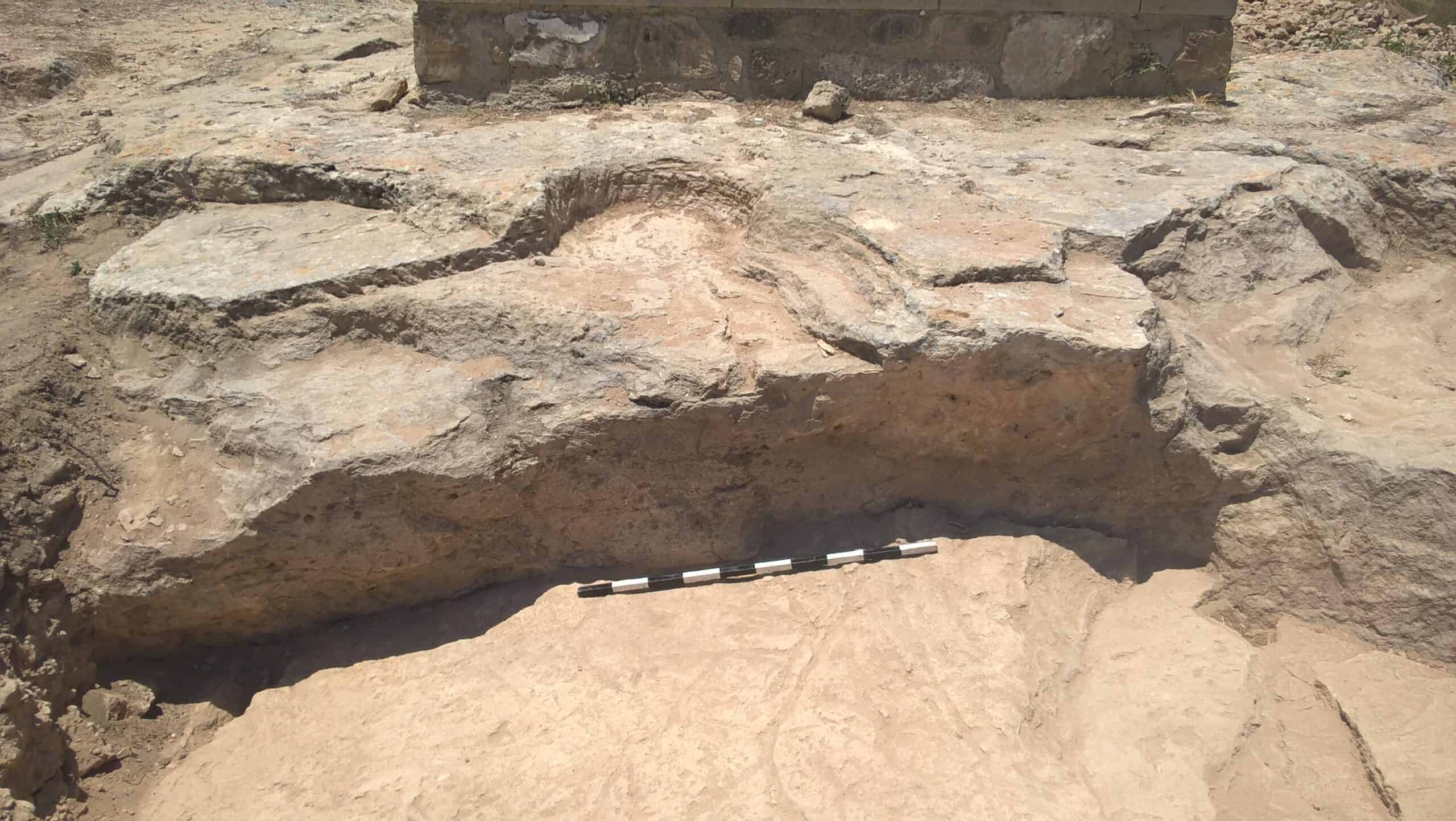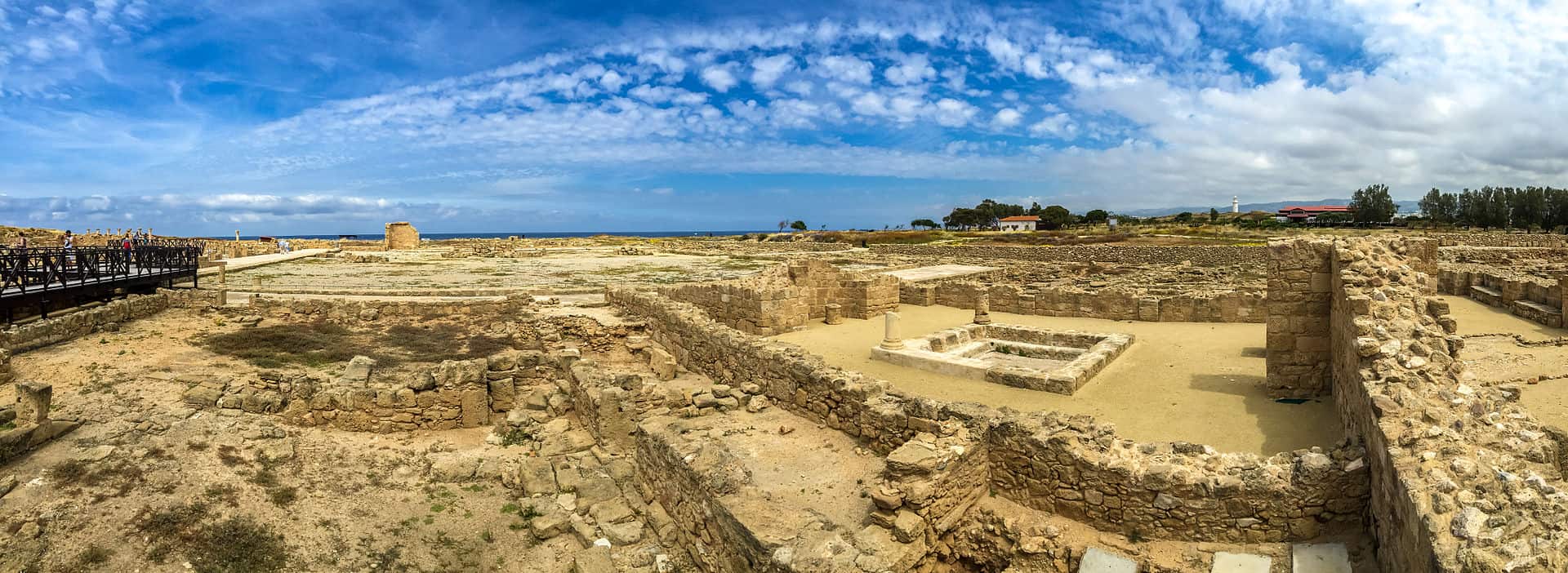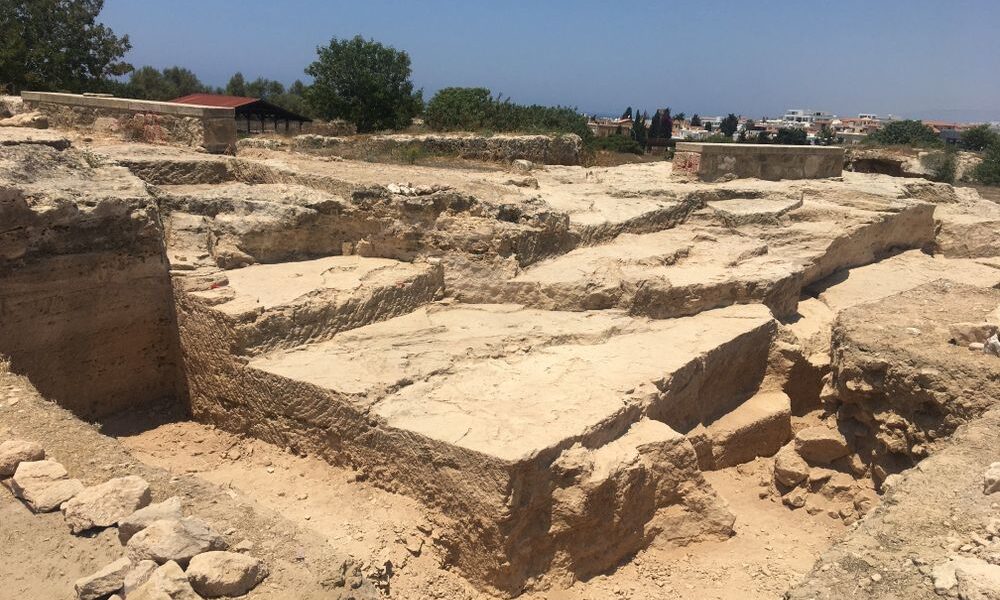The first of its kind discovery on Cyprus, a two-millennia-old place of worship where offerings of wine and flesh were made was discovered by Polish archaeologists in the UNESCO-listed city of Nea Paphos.
In 2017, Polish and French archaeologists banded together and have been researching the Fabrika mound located in the perimeter of the ancient city of Nea Paphos, an area of sacral nature and purpose. It is on the very top of the hill where the remnants of an ancient temple are located that the ground of ritual banquets has been discovered.
Although only outlines of the temple walls survived, the archaeologists made out that the edifice was of square-like shape with a courtyard on a rock platform in front of it. A couple of meters away, a monumental stone-carved altar used to stand. With the image in mind, one can assert that the building did not resemble typical Greek temples flanked by tall columns.
The head of the excavation Professor Jolanta Młynarczyk from the University of Warsaw’s Archaeology Department told the Polish Press Agency (PAP) that “it was a place dedicated for open-air banquets with a characteristic semicircular outline, the stibadium. A round concavity with a drainage rut for libation was located at the center of the offering ground.” She added that similar installations were found at the ancient Nabatean capital of Petra (c.a. 6th century BC – 106 AD) in southern Jordan.

“However, no such installations were found on Cyprus,” Professor Młynarczyk said, adding that “it’s an extraordinary discovery.” The researcher went on to say that offerings in the name of gods that involved wine-drinking and at times feasting on the meat of offerings was a widespread custom in many Mediterranean cultures. Open-air feasting is evidenced by the monuments found elsewhere in Cyprus, namely in Golgi.
According to the archaeologists, the temple was in active use between the 2nd century BC and mid-2nd century AD, until its likely destruction by an earthquake around 150 AD when henceforth the center of worship was moved closer to the city center. It yet remains unknown what deity was worshipped there.
They do, however suggest that it might have been the patron of the ancient city, namely, the Aphrodite of Paphos.
“Currently, other tasks lie before our archaeological team — tasks related to the comprehensive research of the sacral terrain of Fabrika, leading up to the final identification of the god or gods who were worshipped here in the Hellenic and early Roman periods,” said Professor Młynarczyk.
She stressed that this year’s research season was particularly difficult due to pandemic restrictions.
“When we initiated work in the last 10 days of May, Cyprus was well under anti-COVID restrictions, which did not stop us from making breakthrough discoveries shedding light on the ancient culture of the island,” she said.
Professor Młynarczyk’s mission is carried out under the National Centre of Science (NCN) “Harmonia 8” grant in cooperation with the University of Avignon, France.

The ancient city of Nea Paphos is one of the most important archaeological sites in Cyprus. It was established in the southwestern part of the Island at the end of the 4th century BC. In the Hellenic period, it belonged to the Ptolemaic Kingdom. Then it fell under the protectorate of Rome. Nea Paphos was the island’s capital from 200 BC to 350 AD.
Polish Mediterranean archaeology Professor Kazimierz Michałowski initiated the Polish excavations in Nea Paphos. The digging of holes have been going on for 56 years now, drawing generations of Polish archaeologists from the University of Warsaw and the Jagiellonian University of Kraków, not to mention other Polish and foreign institutions.

